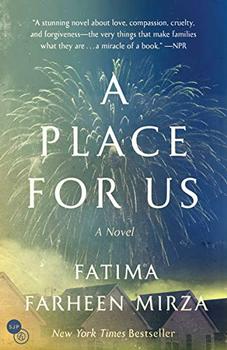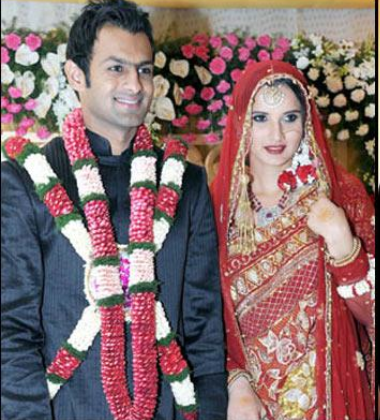Summary | Excerpt | Reading Guide | Reviews | Beyond the Book | Read-Alikes | Genres & Themes | Author Bio

This article relates to A Place for Us
A Place for Us, Fatima Farheen Mirza's debut novel about a Muslim family of Indian descent, begins with a wedding. Marriage is an important part of the Muslim culture and is mandated by the Quran. While all that is required to be legally married is a simple ceremony involving the bride and groom, two Muslim witnesses and a male guardian for the bride, most Indian-Muslim marriages involve multiple highly ritualized steps, as explained by Cultural India and summarized below:
 The rites for becoming husband and wife typically begin at the mosque. A service is held during which the Maulvi (a religious leader or scholar) invokes a prayer (the Salatul Ishtikara) asking for Allah's consent and blessing for the marriage. At a minimum, the groom and the bride's father are present, but generally attendees include the bride, groom and both families. This serves as the official announcement of the intended nuptials.
The rites for becoming husband and wife typically begin at the mosque. A service is held during which the Maulvi (a religious leader or scholar) invokes a prayer (the Salatul Ishtikara) asking for Allah's consent and blessing for the marriage. At a minimum, the groom and the bride's father are present, but generally attendees include the bride, groom and both families. This serves as the official announcement of the intended nuptials.
A ceremony called the Imam Zamin follows, during which the groom's mother visits the bride's home bearing gifts, including a gold or silver coin wrapped in a silk scarf. This is tied around the bride's wrists, symbolizing formal acceptance of the woman into her future family's household.
The next step is an official engagement ceremony called the Mangni, attended by family and friends of the couple culminating in a ring exchange between the two. The bride and groom are considered formally betrothed at the conclusion of this ritual.
A day or two before the wedding, the bride's mother, sisters and friends may hold a sort of bachelorette party referred to as a Manjha. The bride is dressed in yellow and a paste made of turmeric, sandalwood and rosemary is applied to her face and hands. The Mehendi, another women's-only ceremony during which the bride's hands and feet are painted with elaborate henna designs, may be held at the same time or on the next day. The bride stays in her home afterwards, until the actual Nikah ceremony (also spelled Nikkah).
During the Sanchaq, the next ritual, the groom's family visits the bride, bearing gifts plus the outfit she's to wear for the wedding. Included are matching jewelry and other accessories such as perfume and cosmetics. The bridal gown may be any color except black (the color of mourning in Muslim cultures) but is often red or green. Usually the dress is very modest, concealing all but the bride's face and hands.
On the wedding day, the groom forms a baraat, an elaborate procession to the wedding venue that includes his family and friends. The groom's mode of travel varies, although in some Indian cultures a white mare is traditional. The parade often includes musicians and dancers as well as the celebrants. He is welcomed at the threshold of the wedding site by his future brother-in-law or another male relative of the bride and offered a drink of sharbat (a sweet drink comprised of fruit juices and sugar, also known as sherbet). He and the rest of his party are sprayed with scented water as they enter.
The Nikah itself is a very solemn event. Men and women are separated, and the bride and groom don't see each other until after they're wed. The groom's family presents the bride with mehr, a pre-determined amount of money or property, after which the presiding maulvi recites a prayer from the Quran. He then invokes a ritual referred to as the Ijab-e-Qubool, during which he asks the bride three times, "Qubool hain?" ("Do you give your consent?"). The bride must reply "Qubool hain" each time, with certainty and without hesitation. This process is then repeated with the groom. The signing of the marriage contract, or nikahnama, follows; the document, which details the duties and responsibilities of the bride and groom throughout the marriage, is signed by the couple and their families, and is witnessed by at least two people from each participant's side. The maulvi recites a paragraph from the Quran which is the equivalent of the marriage vows, followed by blessings by the elders of each of the families. The two are considered wed at this point.
Immediately after the ceremony comes the Arsi Mushraf, which is the first time the couple sees each other as husband and wife. A mirror is set up between the two that allows each to see their new spouse reflected, and a Quran is balanced on top of the mirror. The bride then sets off for her husband's home where she's greeted by her mother-in-law, who places a Quran upon her head to remind her of her duties; this rite is called the Rukhsat.
A Walimah is subsequently held, which serves as a public declaration of the marriage. During this large reception, the bride and groom sit in thrones on a raised stage, greeting those attending the feast.
Four days after the wedding the new couple visits the bride's home for an elaborate luncheon. This ceremony, called the Chauthi, concludes the marriage celebration.
Indian tennis player Sania Mirza and Pakistani cricketer Shoaib Malik at their 2010 wedding in Hyderabad.
by Kim Kovacs
Filed under Places, Cultures & Identities
![]() This "beyond the book article" relates to A Place for Us. It originally ran in June 2018 and has been updated for the
March 2019 paperback edition.
Go to magazine.
This "beyond the book article" relates to A Place for Us. It originally ran in June 2018 and has been updated for the
March 2019 paperback edition.
Go to magazine.
Your guide toexceptional books
BookBrowse seeks out and recommends the best in contemporary fiction and nonfiction—books that not only engage and entertain but also deepen our understanding of ourselves and the world around us.